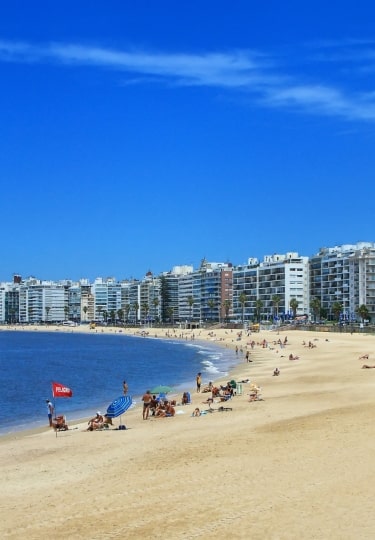Uruguay may be the second smallest nation in South America, but it has 400 miles of coastline. With its long Atlantic shore, there’s no shortage of wonderful beaches.
As well as the shores along the Atlantic Ocean, visitors can enjoy the sunny, sandy beaches along the massive River Plate as well. Having a mouth that’s 140 miles wide, the river’s beaches can be every bit as wave-tossed as those Atlantic ones.
The epicenters of beach life are the resort of Punta del Este, and the older Piriápolis. But Montevideo itself is lucky enough to have many great beaches all along its seafront.
Here are the 10 best beaches in Uruguay.
Playa Brava, Punta del Este
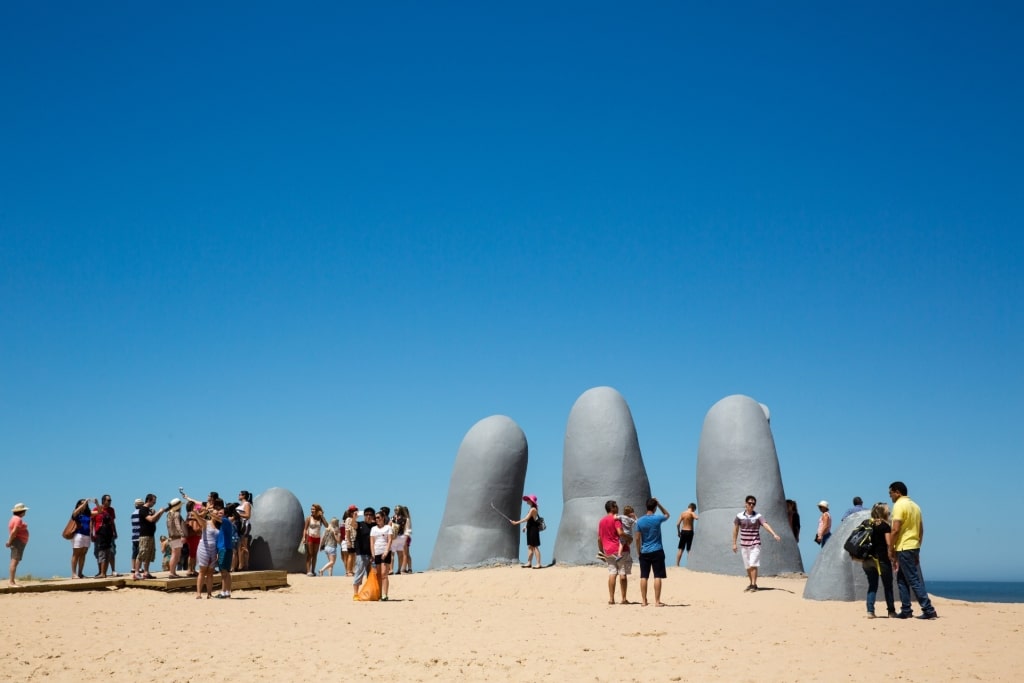
Playa Brava, Punta del Este
This urban beach at the heart of the resort town of Punta del Este is defined by a sculpture of a giant hand that makes it one of the best beaches in South America.
Created by Chilean artist Mario Irarrázabal in 1982, it’s nicknamed “Los Dedos” (“The Fingers”).
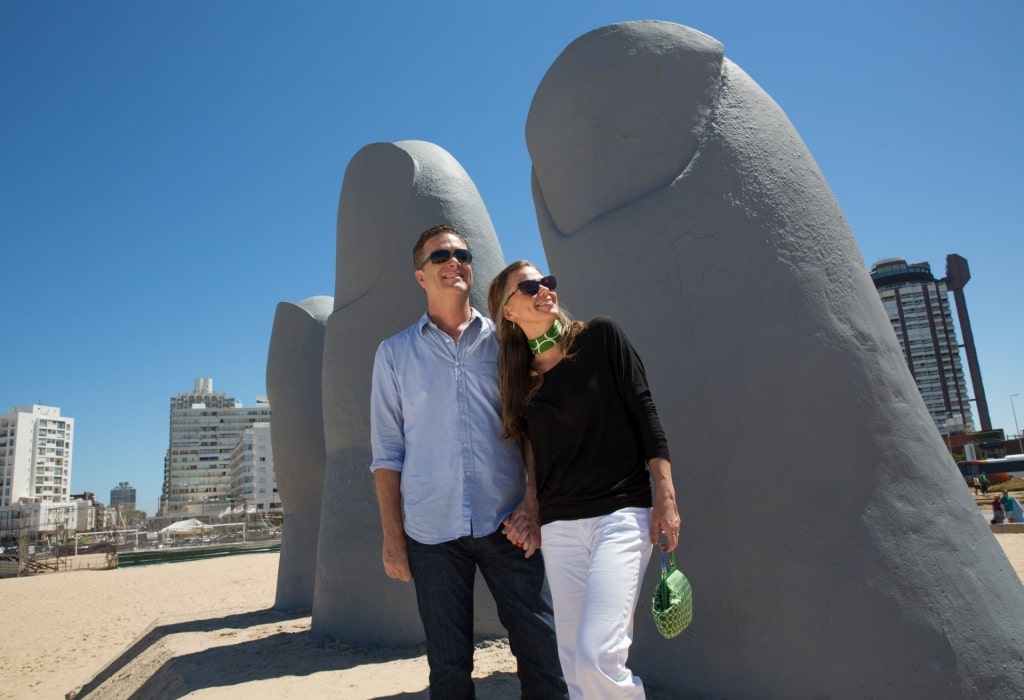
La Mano in Playa Brava, Punta del Este
Much-photographed (and copied around the world), “La Mano” (its official name) is seen by many as a hand of friendship. In fact, this South American landmark represents a swimmer rescued from drowning and is a warning about the dangers of this exposed Atlantic coast.
The lifeguards on duty make sure you take any risk seriously. Listen to them, and bear in mind that the greatest danger is hard shells underfoot.
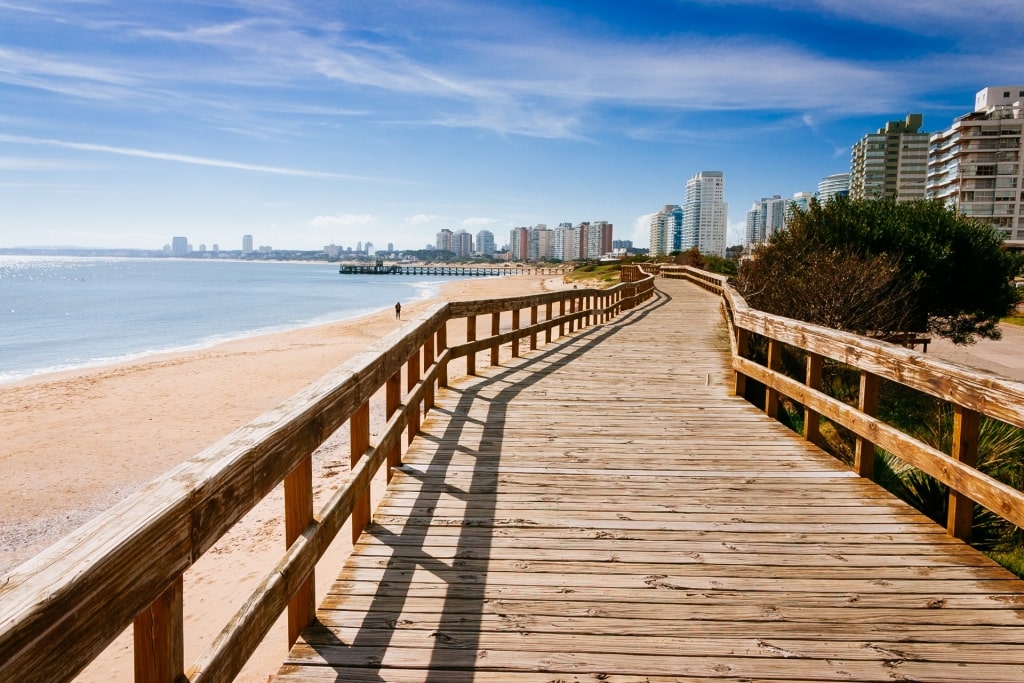
Playa Brava, Punta del Este
Most of the time, those big waves are full of surfers. The five-mile-long beach is also popular with volleyballers, paddle-boarders, and sunbathers.
Being so close to the center of Punta, you are never far from a hotel or bar, and many have terraces to serve drinks to beach-goers. If there is a surfing tournament on, things become even more lively.
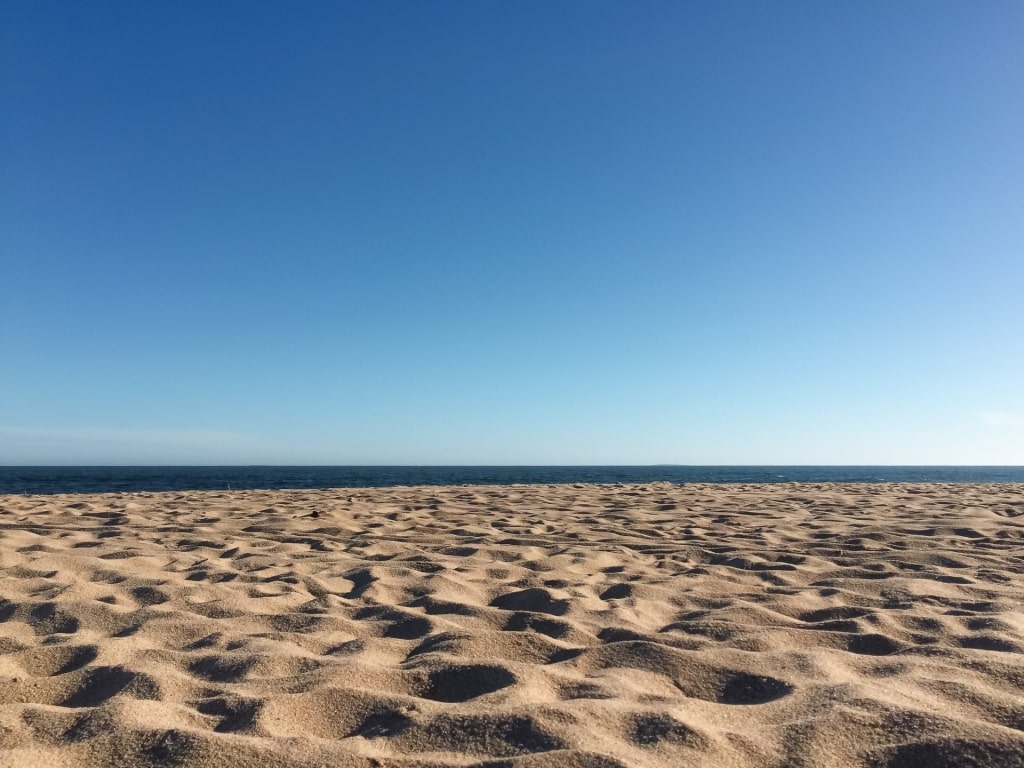
Playa Bikini, Punta del Este
Keep going northeast, into the suburb of La Barra, and you’ll find even more fashionable beaches. Playa Montoya, and the (fittingly) tiny Playa Bikini carry on the energy of Playa Brava.
Playa de los Pocitos, Montevideo
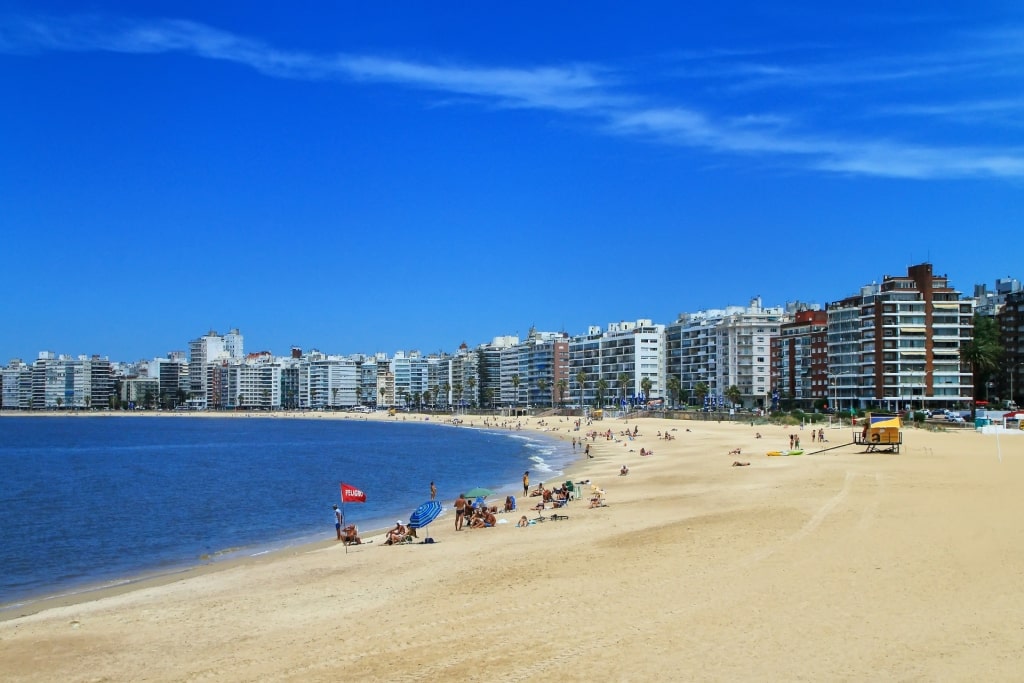
Playa de los Pocitos, Montevideo
The large “Montevideo” sign on Playa de los Pocitos is almost a compulsory stop. With a long row of high-end apartment buildings lining the beach, it’s an Instagram favorite.
The beach itself is crowded on weekends with colorful umbrellas, sun loungers and sunbathers. All that adds to the photographic appeal of this urban beach.
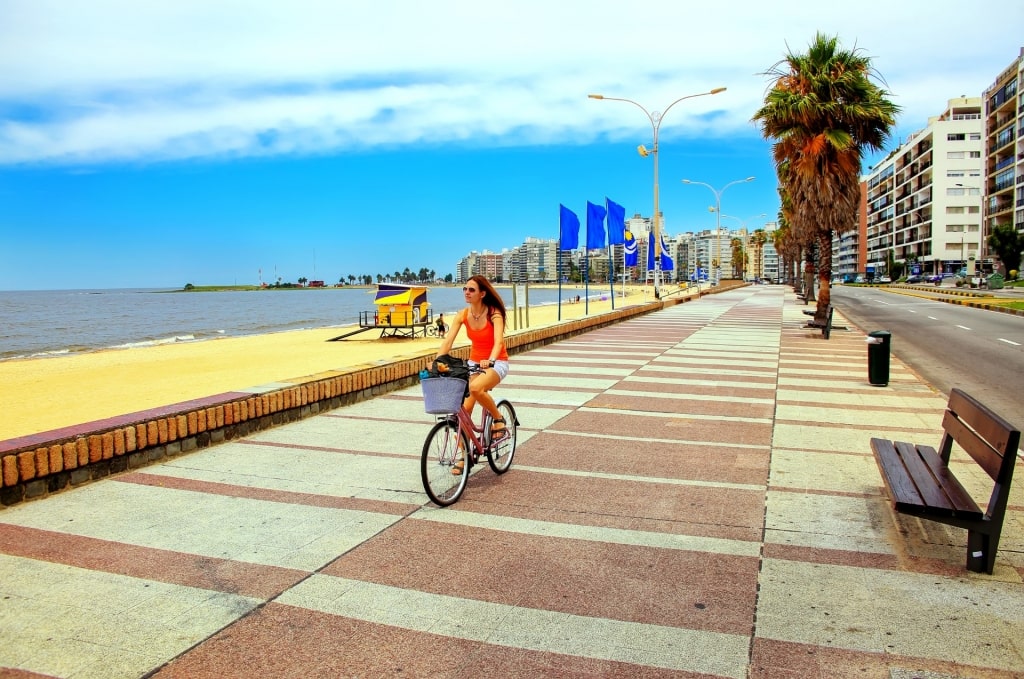
Playa de los Pocitos, Montevideo
It can be enjoyed from the walkway of the Rambla boulevard running along the shoreline. Even better is to wiggle your toes in its deep, white sand.
The beach has plenty of room for everyone, and enough space for soccer, or volleyball competitions. Some are even at international level.
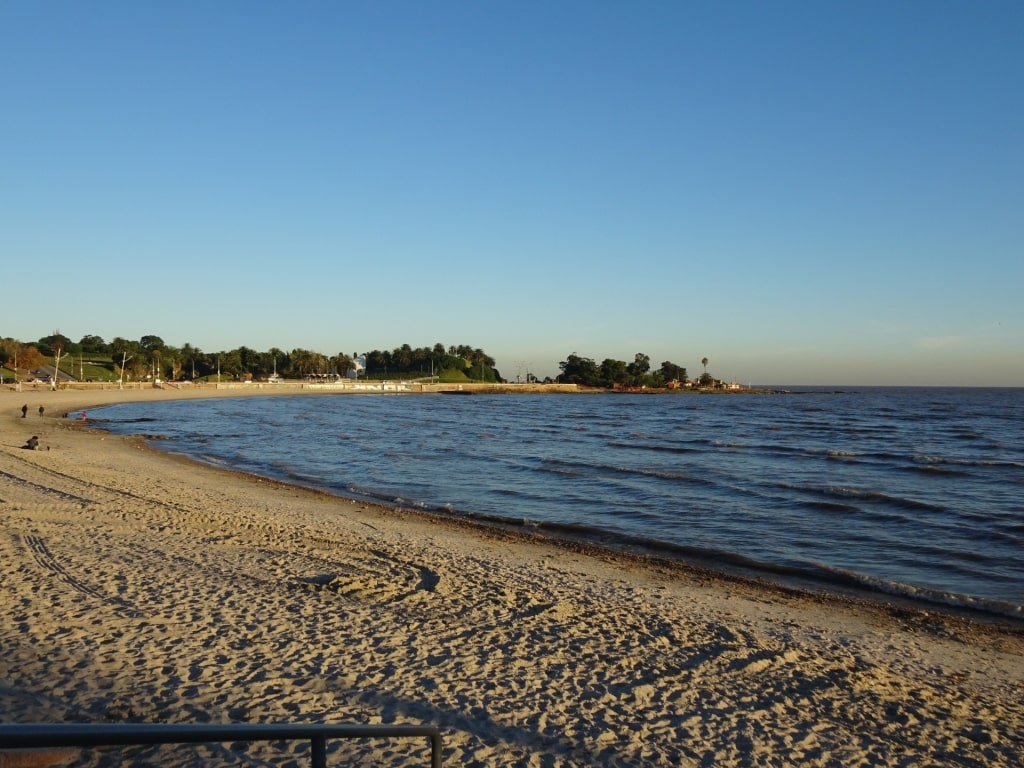
Playa de los Pocitos, Montevideo
You might want to join the few brave souls who go into the water. It’s not very appealing though, to be fair, as it’s the cold, brown River Plate.
Pocito was named for the washerwomen who once worked here, digging small holes (“pocitos”) alongside a stream. It then grew into a spa area, soon adding several upmarket hotels.
The upscale Pocitos neighborhood that has since grown up is an easy place to divert into for its shops, restaurants, and other attractions. You’ll find plenty of museums, and cool art galleries, if you need a break from the sun.
Playa Las Grutas, Punta del Este
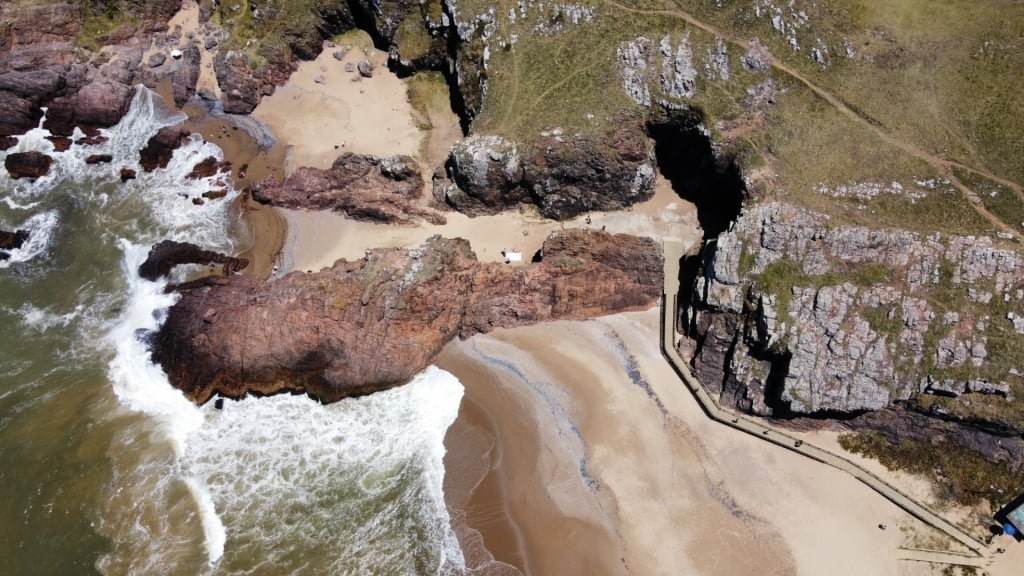
Playa Las Grutas, Punta del Este
Walk west from Playa Mansa, (or take the shuttle bus along the seafront), and you come to Playa Grutas. It’s named for the caves cut into the rocks here by the power of the sea.
The rocks mark this small beach out from others in Punta del Este, but also serve as a warning about swimming. This is a beach to escape the crowds elsewhere in high season, and take in the views, as there are some strong currents.
You might see a paraglider taking advantage of the cliffs, or someone fishing. It’s more likely that the beach will be dotted with sunbathers, or families enjoying the soft, white sand.
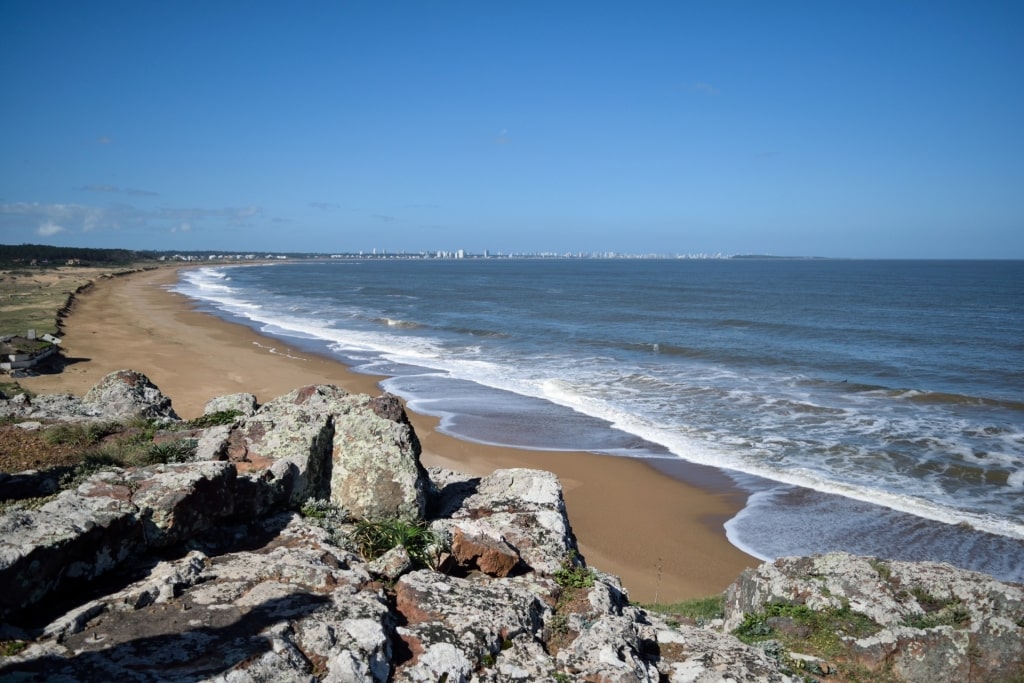
Playa Las Grutas, Punta del Este
This quiet beach ends at Punta Ballena, named for the whales that were once hunted offshore, and that are now returning. You’ll need to visit in winter to see them, however.
Atop the point is Casapueblo, the former home and workshop of Uruguayan artist Carlos Páez Vilaró. Inspired by the white houses of the Greek islands, it’s now a museum with a sunset-friendly café, and is a must-see for any visitor.
Playa José Ignacio, Punta del Este

Playa José Ignacio, Punta del Este
As a beach resort for the resort of Punta del Este, Playa José Ignacio has an air of elegance and style. It’s also good fun, with lots of relaxed cafés, and great restaurants.
The beach is split into two, much like in Punta del Este itself, with a calm Playa Brava and windy Playa Mansa side. Surfers, and kitesurfers, love the winds of Playa Brava, while walkers prefer the long stretches of sand on Playa Mansa.

Playa José Ignacio, Punta del Este
The water is bracing anywhere on this coast, but you’ll find it very refreshing on a hot summer day. A bit of sunbathing, a dip, and then a break in a bar makes up the typical day.
Many of the bars are shacks built for the season, and that aesthetic adds to the informal appeal of José Ignacio. It attracts an artistic, multicultural crowd, and you can expect to hear half a dozen languages around you.

Playa José Ignacio, Punta del Este
Climbing the picturesque old lighthouse is a must-do, to take in the action from above. The bohemian municipality is very strong on environmental issues, so you’ll notice how clean the beach is.
Playa La Colorada, Piriápolis

Playa La Colorada, Piriápolis
This compact, sandy beach is a popular one for good reason. It’s in a small bay protected by the headlands of Punta Colorada, and Punta Negra, just outside the small resort of Piriápolis.
Piriápolis has long been a place for families in Montevideo to have a beach house. Long before Punta del Este became fashionable, it had an elegant hotel, and a casino.

Playa La Colorada, Piriápolis
While Piriápolis continues to grow, this beach still keeps its dunes and some undeveloped land behind it. With so much other beachfront along this coast to choose from, it’s seldom too crowded.
The beach is protected by lifeguards in season and has all the usual facilities. You won’t have to walk too far off the beach to find a beach bar, a café, or a restaurant, either.
You can walk east from Punta Negra on the beachfront almost all the way to Punta del Este. It’s a distance of 20 miles, though, but gives you an idea of why this is such a popular vacation spot.

Sea lions in SOS Rescate de Fauna Marina
At the back of Punta Colorado is SOS Rescate de Fauna Marina, a rescue center for marine animals. This usually has sea lions or penguins recuperating, and you might see some swimming as part of their return to the wild program.
Playa Ramirez, Montevideo
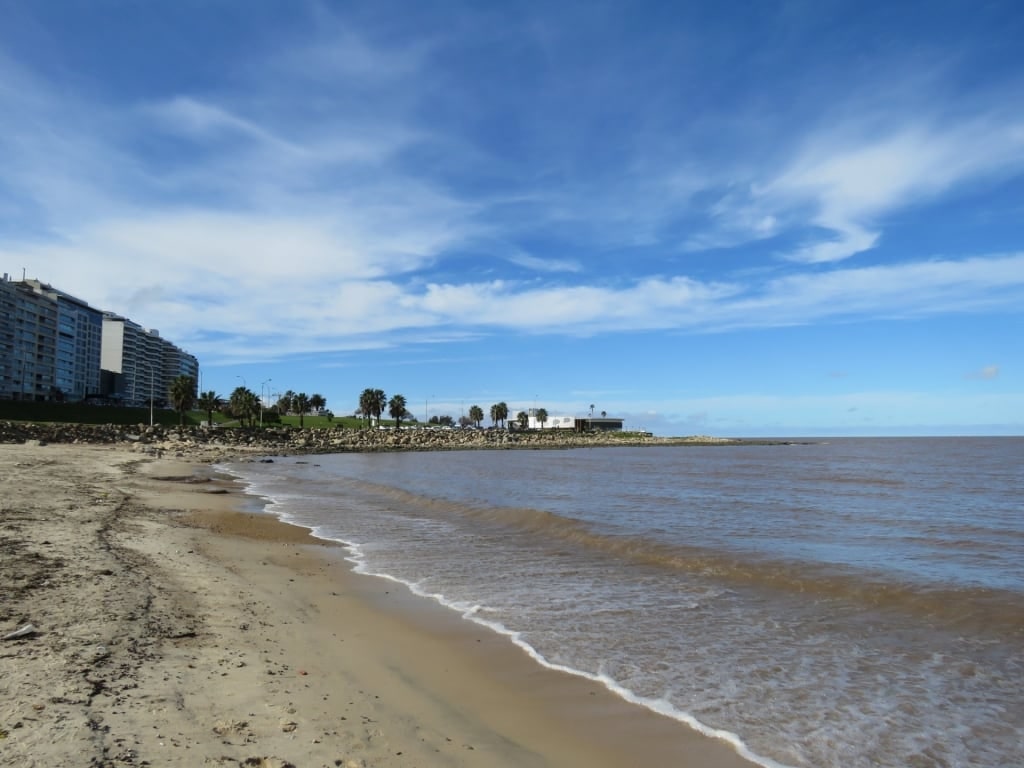
Playa Ramirez, Montevideo
Montevideo has 18 major beaches, a real attraction for the city during the warm months from November through April. Playa Ramirez is not only one of the best in Montevideo, it’s one of the best beaches in Uruguay.
Set into a small bay looking west, it’s backed by a park, a quaint old amusement park, a skatepark, and the National Museum of Visual Arts. There is also a mature golf course open to the public on Sundays.

Canteras del Parque Rodó, Montevideo
The Canteras del Parque Rodó are former quarries (“cantera” means “quarry”). Now filled with water, they are busy with wildfowl, and shaded by trees.
Parque Rodo (the name of the neighborhood as well) takes in Teatro de Verano, an open-air venue for regular musical events. It’s the official stage for the annual Montevideo Carnival.
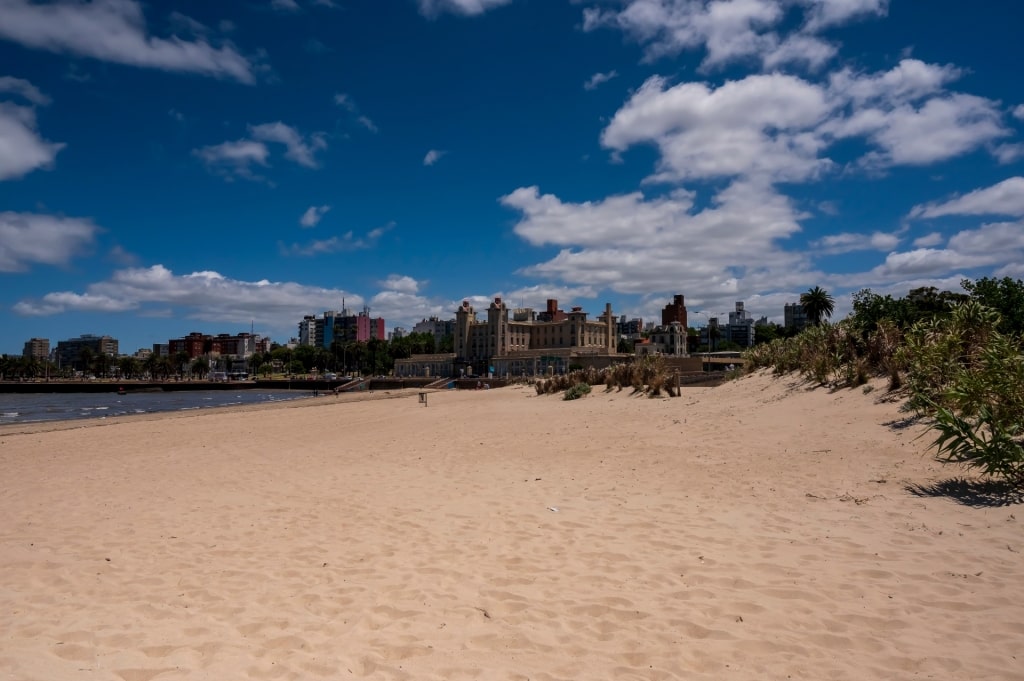
Playa Ramirez, Montevideo
The beach is a relatively calm oasis amid all those diversions, although there’s usually at least one game of beach volleyball, open to all.
Facing west, it has good sunsets, but it’s a good place at any time of the day to just sit and take in the view. The beach is also one of the few near central Montevideo with good wheelchair access.
Playa del Buceo, Montevideo
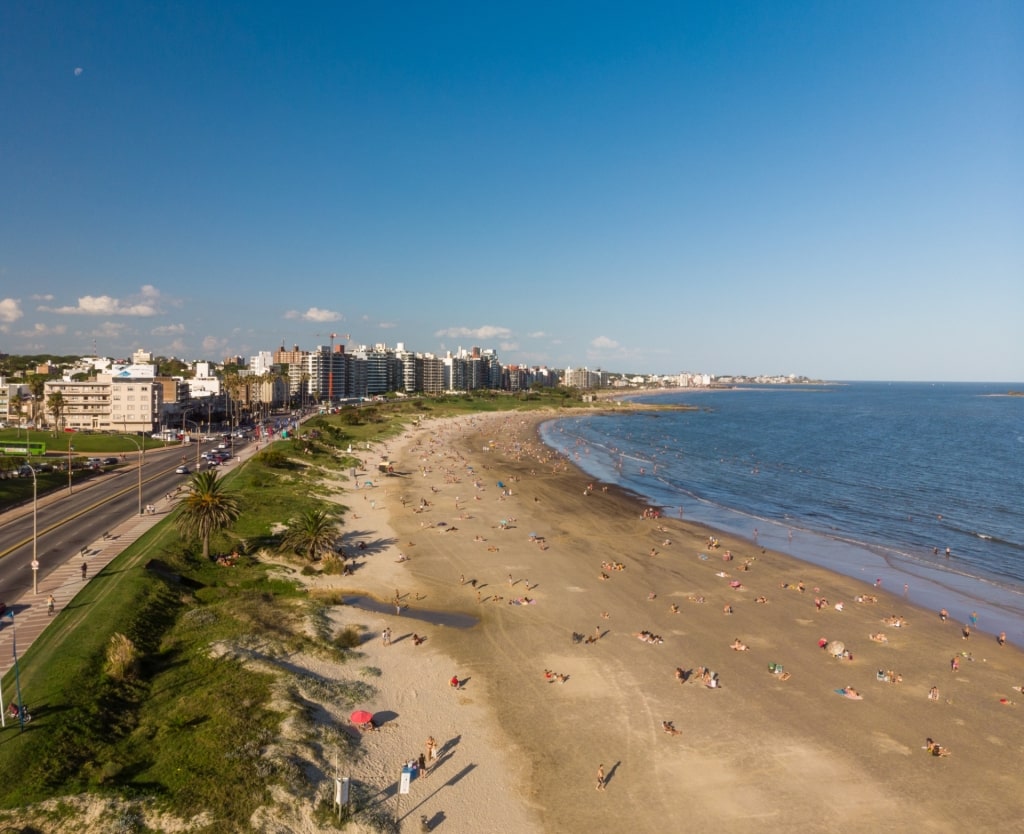
Playa del Buceo, Montevideo
“Diving” Beach is named for a dive station set up in the mid-1700s to recover treasure from a sunken Spanish galleon. It has given its name to the entire neighborhood, which is one of the most historic, and developed, in Montevideo.
The presence of the Uruguayan Yacht Club in Buceo keeps the link to the sea that historically belonged to fishing. A few fishing boats cling on, and you’ll also see anglers on the shoreline trying their luck.
It’s no surprise that the port area is noted for its seafood restaurants. Behind the yacht club are high-rise apartments, offices, and the busy Montevideo Shopping Mall.
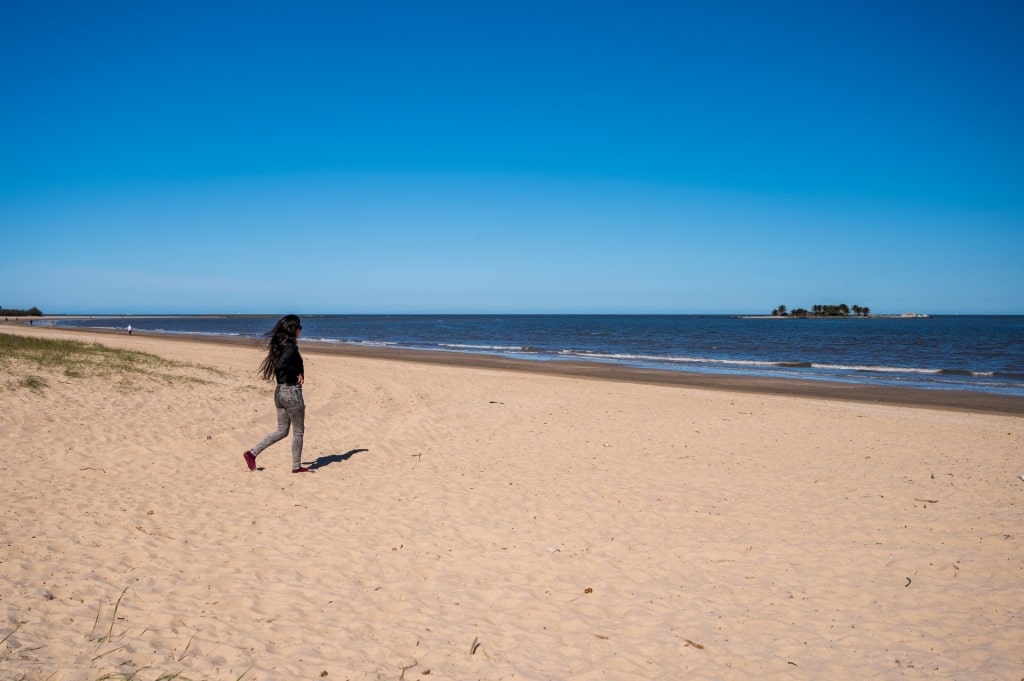
Playa Malvin, Montevideo
But walk east along the rambla, away from the port’s tiny beach, and you will come to Playa del Buceo. This long stretch of sand runs on into Playa Malvin, operated only by small headland.
It’s a beach popular with local families, footballers, and walkers. There is also a kite-surfing school, and a sailing academy nearby.
The views are magnificent, but remember that it’s the River Plate you’re looking at, not the Atlantic Ocean. Despite the waves, you need to head to Punta del Este for seawater.
Don’t miss the Maritime Museum behind the port, and the historic Cementerio del Buceo. Established in 1872, its many ornate sculptures will remind you of the more famous cemeteries in Buenos Aires.
Playa Carrasco, Montevideo
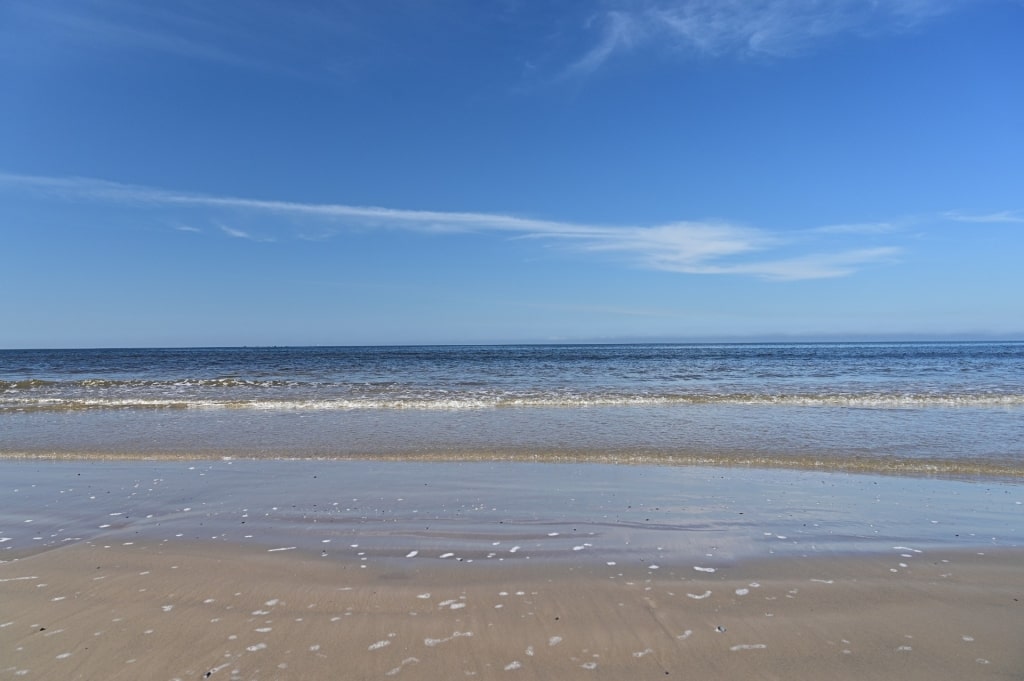
Playa Carrasco, Montevideo
A 15-minute drive from Playa de los Pocitos is Carrasco Beach. Being farther from the center, in the affluent Carrasco neighborhood, it has a very different feel.
In 1889, local Dr. Alfredo Arocena saw the possibilities of this two-and-a-half-mile beach of fine white sand. Sent to Europe as a graduation present by his parents, he was inspired by the seaside spa town of Ostend.
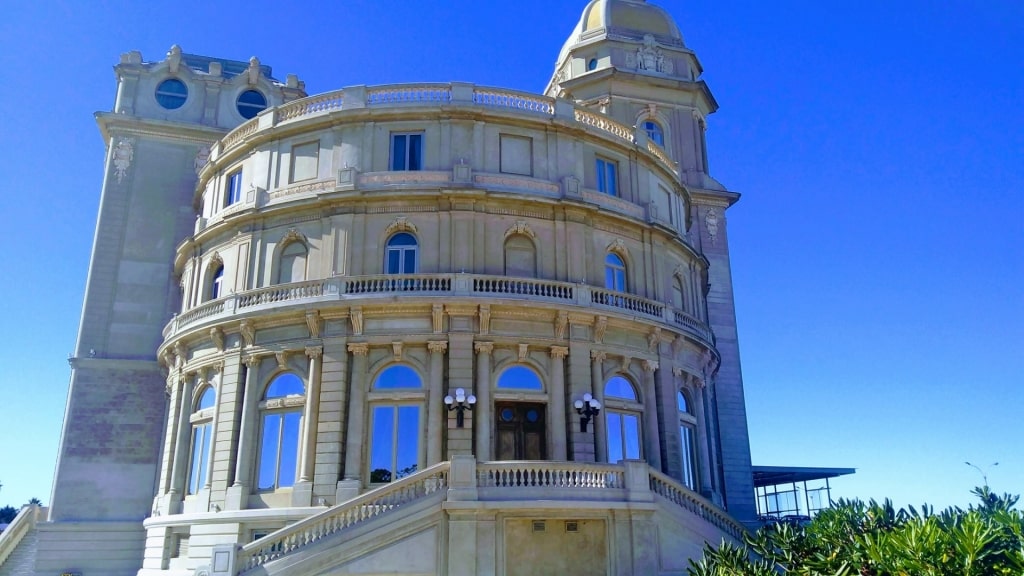
Gran Hotel Casino Carrasco, Montevideo
The result was the Gran Hotel Casino Carrasco, now a Sofitel, and a planned neighborhood with elegant streets, parks, and gardens. The main street is still named Avenida Alfredo Arocena.
Few of those sunbathing or playing on the beach recognize the foundations laid by that good doctor. He might be equally bemused to see the families and friends running, cycling or playing football together.
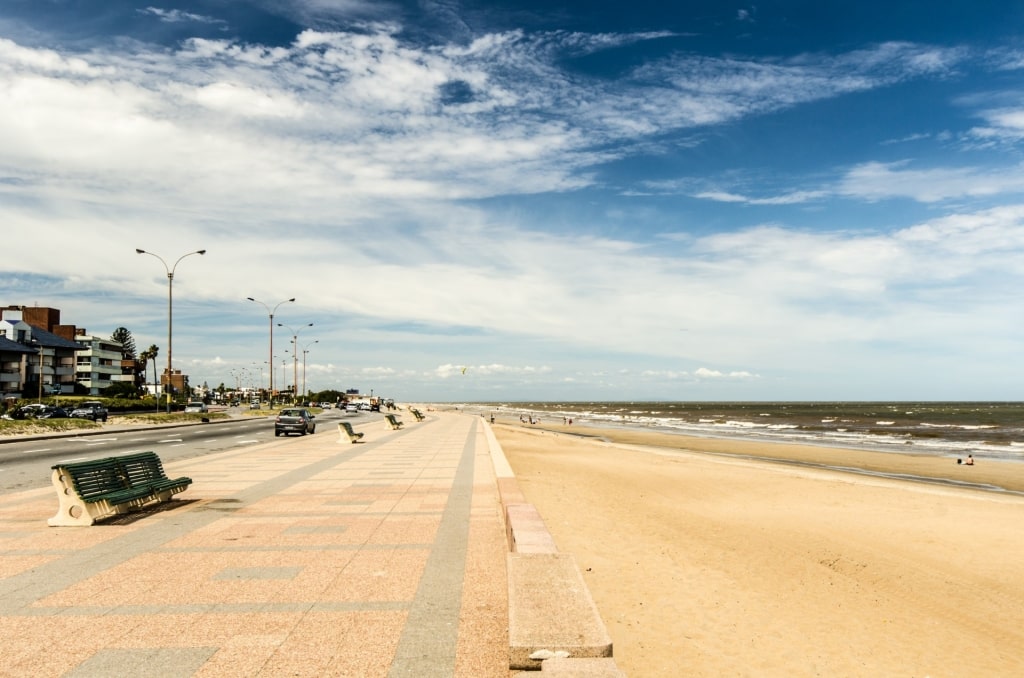
Playa Carrasco, Montevideo
If you tire of the beach, the neighborhood is worth a walk around to admire the many fine buildings and elegant shopping. Sunday brunch at the historic casino and spa is essential if you happen to be here on a weekend.
Playa El Pinar, Montevideo
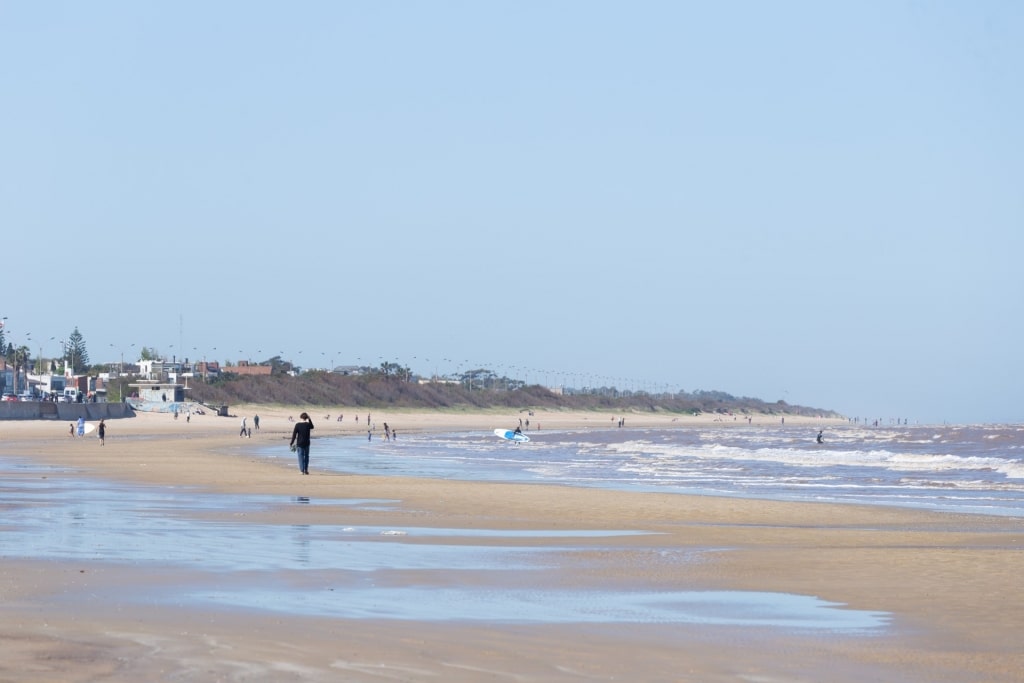
Playa El Pinar, Montevideo
The beach fronting Montevideo may seem like it goes on forever, but the official end is at El Pinar. The beach doesn’t stop, of course, running on across a wide creek into Playa Pinama, then Punta del Este, and beyond.
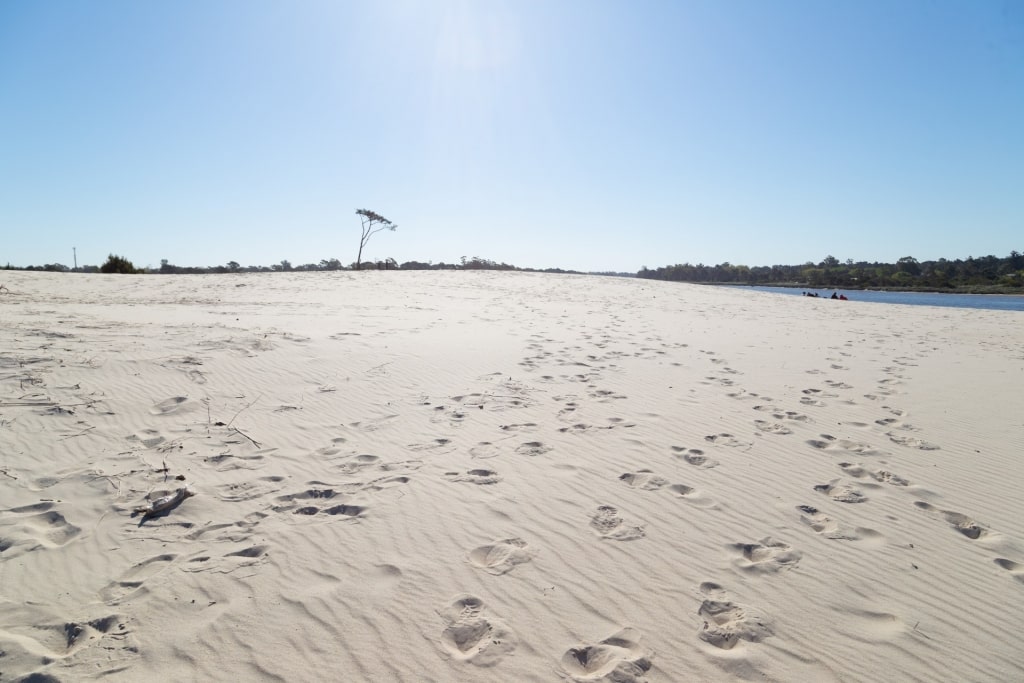
Playa El Pinar, Montevideo
El Pinar is named for the pine trees that once abounded here, some of which still stand among the dunes. The beach is a lovely expanse of white sand, perhaps the whitest and best in this South American country.
It’s a truly massive beach, with a surprisingly rural feel. There are a few shops renting kayaks or selling ice cream, but they are few and far between.
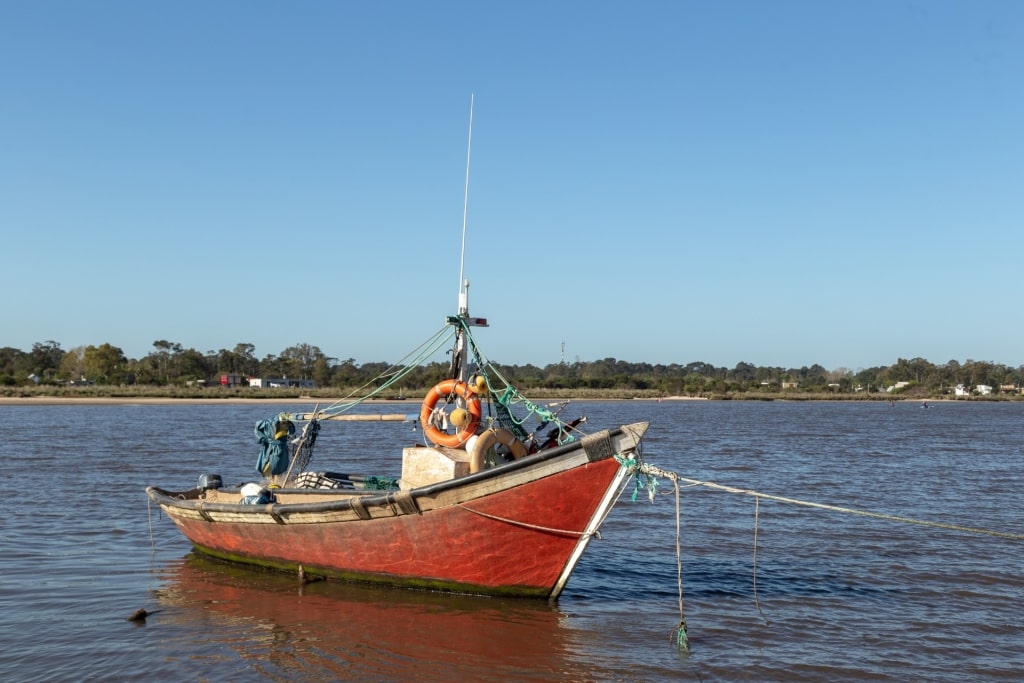
Arroyo Pando, Montevideo
The beach ends at the Arroyo Pando, where a small river cuts through the dunes to the River Plate. This is a beautiful spot to enjoy the combination of soft sands, contrasting greenery, and clear water.
You’ll find a good choice of restaurants or paradors here for a lunch or snack. Alternatively, the large shady park is a good spot for a picnic.
Playa Mansa, Punta del Este
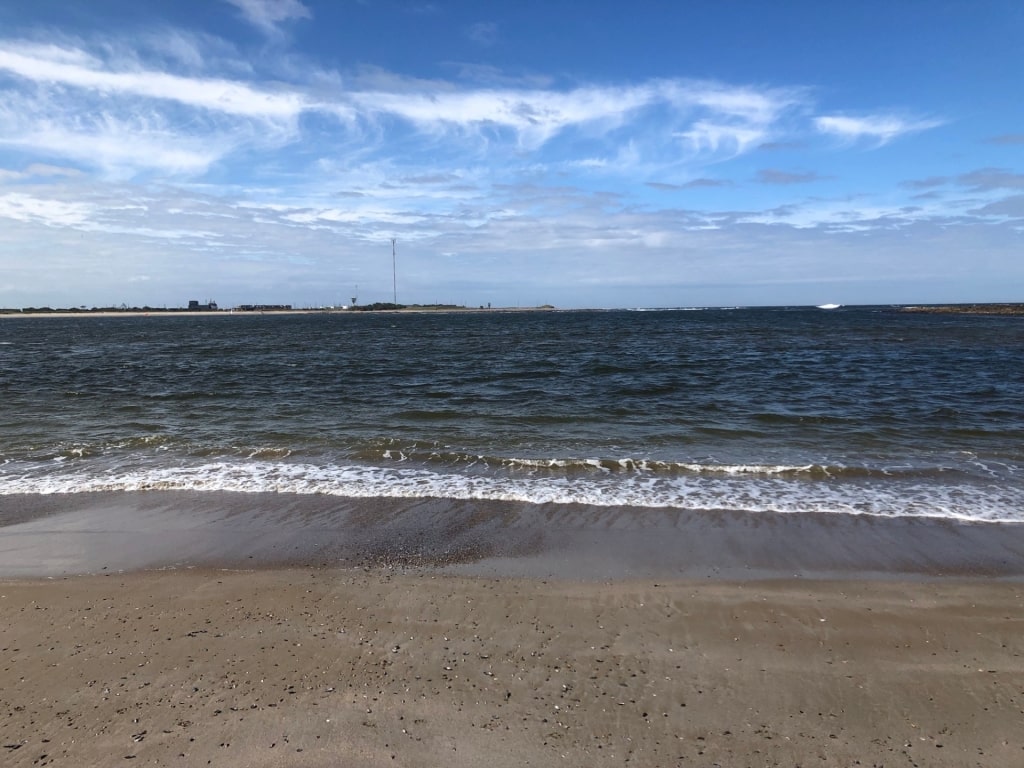
Playa Mansa, Punta del Este
Much calmer than nearby Playa Brava, westward-facing Playa Mansa is popular for its magnificent sunsets. “Mansa” means “calm” in Spanish, while “brava” means “fierce”.
The beach is sheltered by the point, which takes it out of the prevailing wind to be calmer and warmer. Add fine sand, and you’ll understand its popularity.
Beginner surfers, windsurfers, kayakers, or paddle-boarders also find it more consistent than Playa Brava. This is the best place in Punta to take lessons in any such watersports.
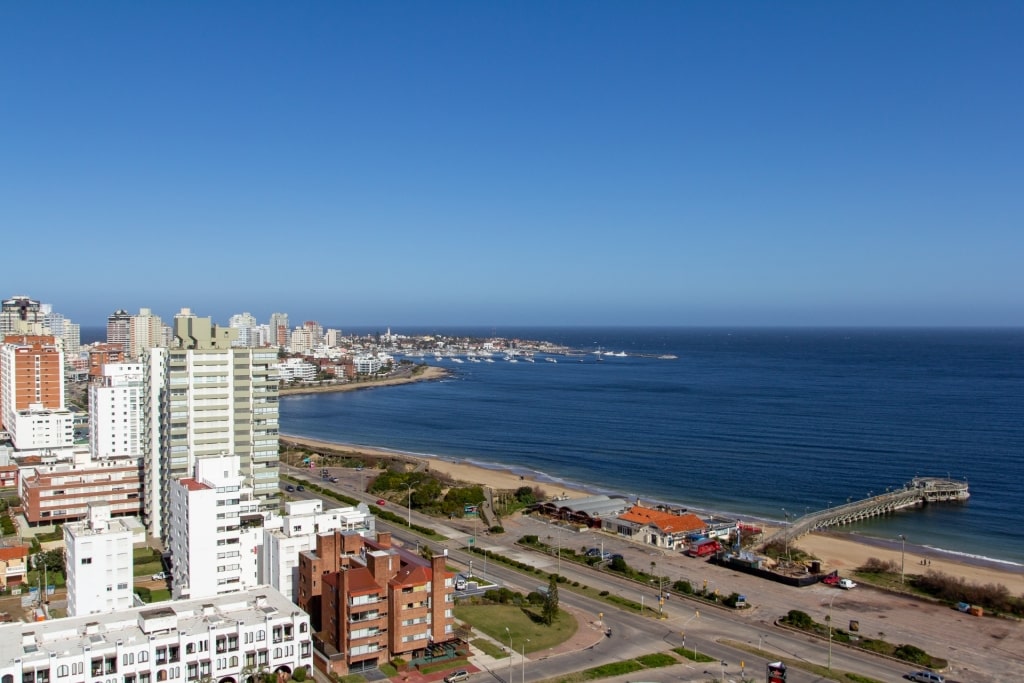
Playa Mansa, Punta del Este
Most visitors, however, just enjoy sunbathing on the long, flat sands. It’s also a good beach for walking, either on the beach itself or the lovely promenade behind it.
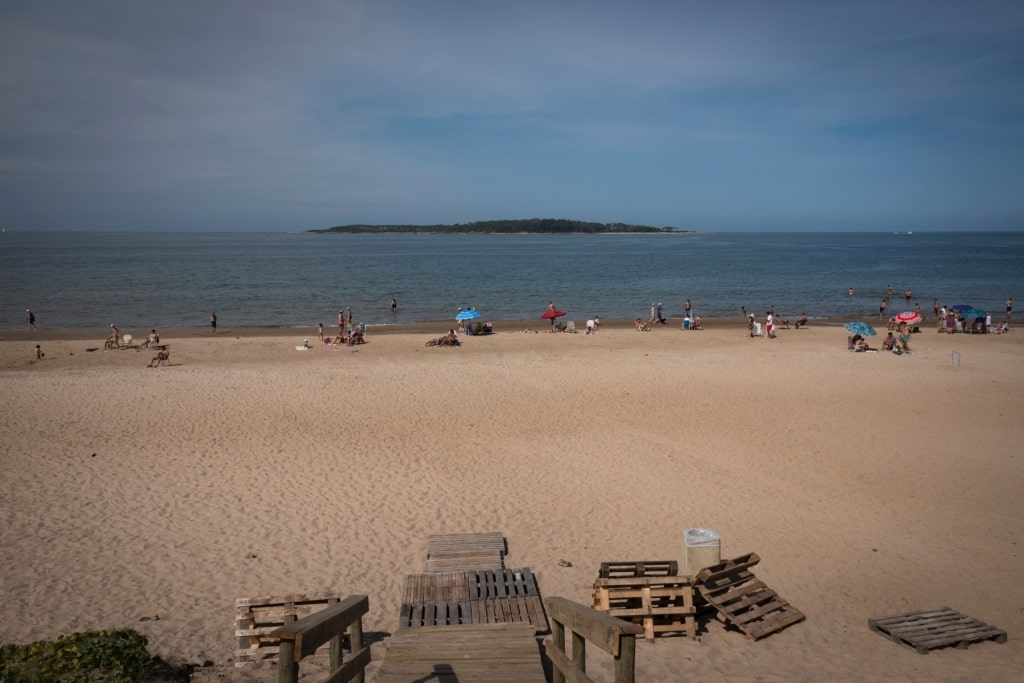
Playa Mansa, Punta del Este
Offshore is the scenic Gorriti Island, whose guns once guarded the approaches to the River Plate. From July through November, you might also be lucky enough to see whales.
To take a break, there are plenty of Uruguayan food vendors along the promenade if you feel the need for ice cream or another refreshment. There are also many cafés, bars, restaurants, and shops on the promenade or just off it.
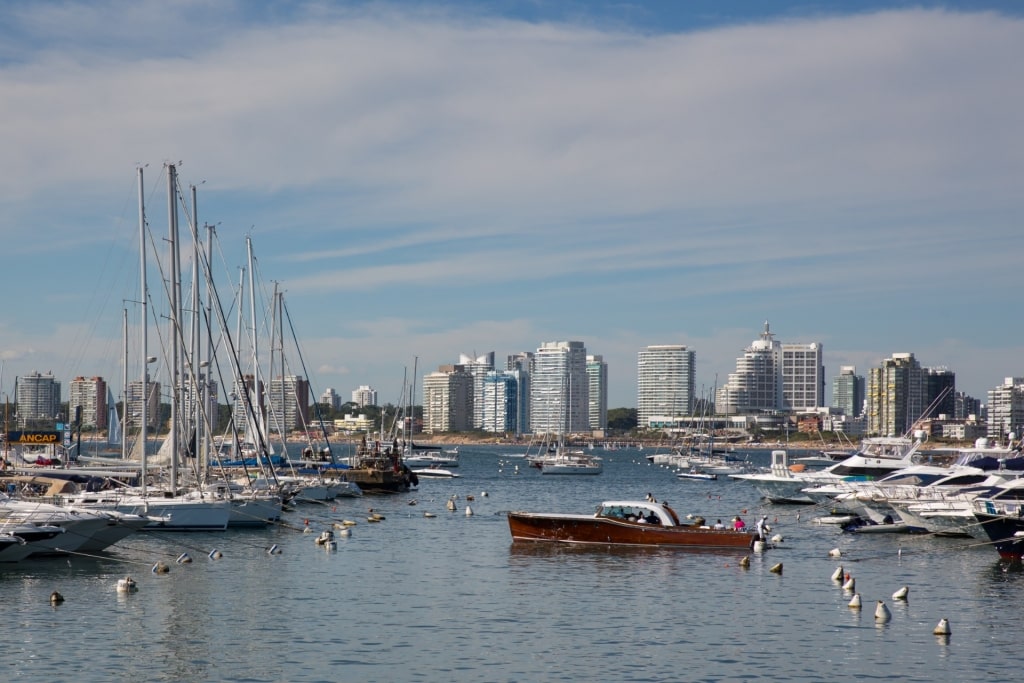
Punta del Este
Has this list of the 10 best beaches in Uruguay inspired you to feel your toes in the warm sand? Then browse our cruises to Montevideo and book your South American getaway today.
